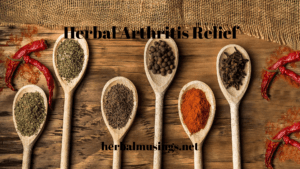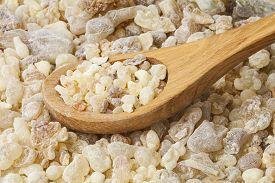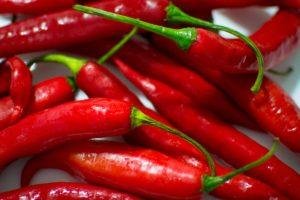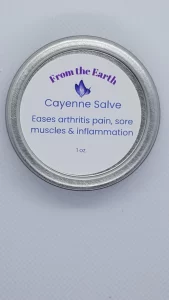Ease of movement isn’t something most of us think about, we can move so we take it for granted. That is unless you have Rheumatoid arthritis or Osteoarthritis, then every move can hurt and simple activities can be painful.
Rheumatoid arthritis is characterized by pain, inflammation, stiffness and problems in joints functioning. This type of arthritis is seen more in women than men. The following herbs can help ease the pain of arthritis.
Herbs for Arthritis
Evening Primrose oil – is a rich source of the essential fatty acid gamma-linolenic acid (GLA) which has a number of therapeutic uses. GLA present in evening primrose oil is converted to DGLA in the body that produces an anti-inflammatory effect. Other compounds found in evening primrose oil such as sterols and esters are also responsible for its anti-inflammatory effect. GLA is extracted from the seeds of evening primrose.
In a study in which RA patients consumed 1,400 mg GLA daily, their RA symptoms were significantly reduced, including the number and severity of tender joints and degree of swelling (Leventhal 1993). A thorough review of clinical trials found that whereas consuming 1,400 mg daily or more of GLA resulted in a significant improvement in RA related symptoms, lower doses (i.e., 500 mg daily) did not appear effective (Cameron 2009).
Boswellia – also known as Indian Frankincense, reduces inflammation and treats rheumatoid arthritis and osteoarthritis symptoms. Boswellic acids are the active components and have strong anti-inflammatory and analgesic properties. They may also help prevent cartilage loss and inhibit the autoimmune process. You take boswellia internally and apply topically to affected joints to relieve inflammation. Use boswellia internally for eight to 12 weeks and the cream is used as long as needed.
Dosage: Capsule or tablet; typically 300 mg to 400 mg three times per day. Look for products with 60-percent boswellic acids, the active ingredient.
Ginger – decreases joint pain and reduces inflammation in people with osteoarthritis and rheumatoid arthritis. It has anti-inflammatory properties similar to ibuprofen and COX-2 inhibitors such as Celebrex. Ginger also suppresses inflammatory molecules and switch off certain inflammatory genes, potentially making it more effective than conventional pain relievers.
Try a 100mg to 200mg ginger capsule each day for four to six weeks to see if you feel an effect. Steer clear of ginger if you’re taking a blood-thinning medication, like warfarin (Coumadin), as ginger may reverse the effects of these types of drugs.
Green tea – has fantastic anti-inflammatory properties which help with inflammation. Green tea contains a chemical compound called EGCG that belongs to a class of flavanols known as catechins. It is most abundant in green tea and the dried leaves of white tea. The compound contains anti-inflammatory properties. EGCG suppresses the enzymes responsible for the destruction of bone cartilage in arthritis. This helps reduce inflammation and strengthen bones. Drinking green tea or matcha tea on a daily basis helps your body absorb vital antioxidants that reduce inflammation and boost your immune system.
Turmeric – contains potent anti-inflammatory, anti-arthritic, free radical removal and antioxidant properties that aid in treating arthritis. Turmeric reduces pain, inflammation and stiffness related to rheumatoid arthritis and osteoarthritis. Turmeric and its active ingredient, curcumin are natural anti-inflammatory agents. Curcumin uniquely inhibits the action of both pro-inflammatory enzymes- COX and LOX unlike regular medications such as celecoxib which inhibit only COX. Interestingly, curcumin does not cause gastric erosion which is a common side effect of non-steroidal anti-inflammatory drugs.
You can reap the benefits of turmeric by seasoning your foods with it. Add it to soups or stews or drink turmeric tea. Taken orally, turmeric can stop arthritis pain throughout your body. If you want to try turmeric as a therapeutic measure, consider a supplement that contains a concentrated form of curcumin. To use topically, mix turmeric with lime juice and a bit of boiling water to create a thick paste. Apply to sore joints or any sprains and strains.
Avoid turmeric/curcumin if you take blood thinners such as warfarin (Coumadin), are about to have surgery, are pregnant or have gallbladder disease.
Minerals For Arthritis
Epsom salt – is a mineral compound made up of magnesium and sulfate. The most common way to use it is in an Epsom salt bath. Soak in this bath for at least 20 minutes so the magnesium sulfate compounds absorb into your skin. The heat generated in the water helps to increase the circulation of the blood and reduce swelling. Magnesium in Epsom salt possesses anti-inflammatory and anti-arthritic properties.
Magnesium – reduces pain by relaxing muscles and driving excess calcium out of the cells. People who suffer from chronic joint pain such as rheumatoid arthritis and osteoporosis often have abnormally low levels of magnesium. Some good sources of magnesium include nuts like almonds, brazil nuts and hazelnuts. The chlorophyll containing vegetables are excellent sources for magnesium.
More Herbs
Cayenne ointment – contains capsaicin and is a topical medication. Capsaicin’s topical effects occur because applications of the drug to the painful area depletes substance P, a chemical found in the skin that carries pain signals to the brain. Capsaicin treats both osteoarthritis and rheumatoid arthritis. Pain may increase with the first several treatments, due to stimulation of substance P; pain relief may take three to seven days.
Heat can burn your skin after cream application, do not use heating pads or take a hot bath or shower right after application. Cayenne pepper has crossover allergic reactions to other substances.
If you have an allergy to latex, avocado, bananas, chestnuts or kiwi, do not take cayenne pepper. Because capsaicin can increase stomach acidity, don’t use cayenne if you are taking stomach acid reducers. Capsaicin can also increase the risk of bleeding in people who take blood thinners or have bleeding disorders.
Capsaicin Cream Recipe
Ingredients
- 3 tablespoons of cayenne powder
- 1 cup of grapeseed oil (or any other oil like almond, olive, jojoba)
- 1/2 cup of grated beeswax
- A double boiler
- A glass jar with a tight fitting lid
Directions
- Mix together 3 tablespoons of cayenne powder with 1 cup of oil and heat in a double boiler for 5-10 minutes over medium heat.
- Stir in a 1/2 cup of grated beeswax and continue stirring until it has melted and everything is blended together.
- Pour into small tins or glass jars with a tight fitting lid.
- Apply daily as needed for pain.
Try Before You DIY
My cayenne salve is a natural remedy for pain associated with arthritis, stiff joints, and sore muscles. Cayenne is naturally anti-inflammatory and anti-spasmodic, it contains a constituent called capsaicin. Cayenne penetrates deep below the skins surface to improve circulation and decrease pain, providing a soothing relief for everyday aches and pains. Check out my cayenne salve.
Dandelion leaves – are one of the most useful plants to reduce joint pain and aching muscles. The anti-inflammatory properties of dandelion aid in the treatment of arthritis by relieving sore muscles and decreasing joint pain. The dandelion flowers are infused in oil and are a massage oil for aching muscles and joints. Fresh and young dandelion leaves are high in vitamin A and C.
You can eat the young leaves raw in a salad. They help the body repair damaged tissues and assist the liver in clearing toxins from the blood. You can also saute them in a little olive oil and garlic.
These herbs assist your body over time. Take them everyday and within 2-3 weeks, you will start to see improvements. Consult with your healthcare practitioner to make sure the herbs don’t interfere with any medications you might be taking.







